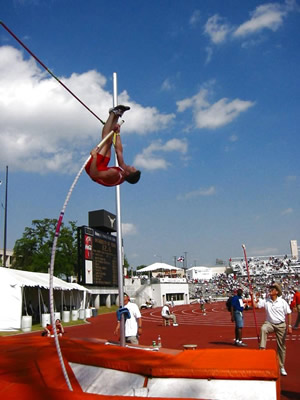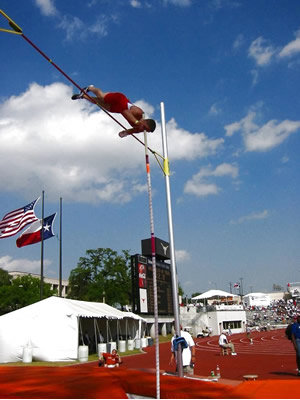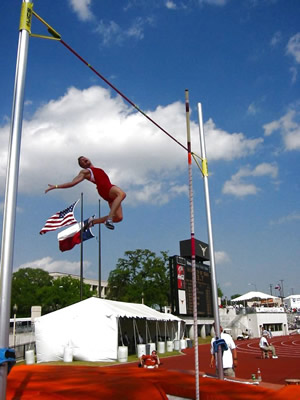"Energy can not be created or destroyed it can only transform from one form into another". This is the Law of Conservation of Energy.
But energy is what athletes strive to maximise and use in their chosen events.
Some undertake extreme training routines to maximise explosive energy transformations. Such energy outbursts convert chemical potential energy into heat energy and kinetic energy (movement).

The food we eat contains chemicals. These chemicals contain energy that is stored in amongst the bonds holding the atoms together. We store the food we eat and combine it with oxygen in a chemical reaction. During this chemical reaction, bonds holding atoms together are broken and energy is released during the formation of products with less energy in their bonds. It is this energy that keeps us alive and able to exercise.
Athletes undergo hard training so they can develop an ability to release the energy in chemical bonds quickly.
The animation on the right simply shows how the atoms in a food molecule are separated by collisions with oxygen molecules. It should be mentioned that energy is released only during the production of low energy products and not during bond breaking. What is formed when food is combined with oxygen in our body is commonly carbon dioxide and water.

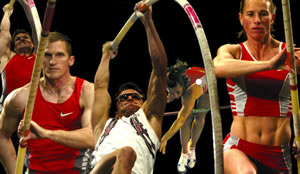
The image on the right shows a pole-vaulter as he attempts the event. Notice how the different energies change during the event. Kinetic energy (KE), elastic energy (EE) and gravitational potential energy (GP) are shown on the top left hand corner.
Firstly the athlete has stored chemical energy in their body. They convert this energy into kinetic energy as they accelerate down the track. Some of this kinetic energy is quickly converted into elastic energy as the pole is placed on the ground and bends. Assuming no energy is lost, the pole has now stored some of the kinetic energy of the athlete. The athlete momentarily slows down as most of his kinetic energy is converted into elastic energy. As the pole straightens it pulls the athlete upwards. The athlete now gains kinetic energy and gravitational potential energy. At the top where the athlete clears the bar he has most of his energy in gravitational potential energy.
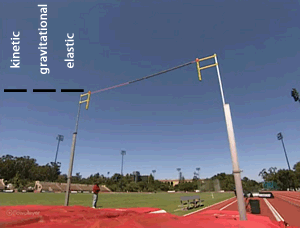
Consider the animation above.
The athlete accelerates down the track with kinetic energy of 32,000
Kj, assuming no energy is lost what is the:
- kinetic energy of the athlete prior to hitting the mat after his jump?
- gravitational potential of the athlete as he comes to a momentary
stop just above the bar?
As the pole bends the athlete is still moving slowly. Is all the kinetic energy transformed into elastic energy? Explain.
Consider the many sports you play. Give three examples where energy is converted from one form into another.
In what form is most of the energy converted to in this stage of the event?
In what form was most of the energy before this stage, considering that the athlete runs down the track at a fast speed?
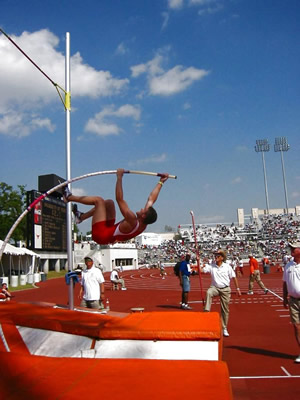
At this point most of the energy is in two forms. What are they?
Energy is being converted into what form as the athlete rises off the ground?
